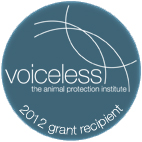The Life in the Anthropocene conference website states that ‘The Anthropocene
describes a period of geological time dominated by homosapiens and marked by
the significant impact of human activity on the planet. At a time when the natural
world is ever more subject to human intervention, interspecies relations face many
challenges. If the cultural and scientific moment of the Anthropocene puts ‘us’ in our
place, then it is time to reconsider our place with them, the other animals.’
Independent MP Andrew Wilkie introduces a bill in Federal parliament calling
for the phasing out of the live export trade while holding up a blown up colour
image of a bull called Jacob suffering gratuitous violence during slaughter in
Egypt. A koala is released back into its favourite tree after being successfully treated
for chlamydia by Australia Zoo. A five-year old Gelding called Reckless Rat is killed
in a jumps race (horses are 20 times more likely to die on the field than in flat racing)
and a petition does the rounds. A proposal to increase protections of polar bears fails to
win international support at a conservation conference, despite increased threats to
the species due to shrinking ice caps and wildlife trafficking. The headline ‘Puppy Farm Raid’
appears in the South Australian newspaper The Courier, above a photo of a neglected dog
living in isolation and squalor; Weekly Times Now appeals for foster homes for
the 100 rescued animals. A video of the laborious rescue by a team of researchers who
happened upon a dying whale entangled in netting goes viral; once freed the
whale rallies to a joyful frolic. A legal team assembled by The Barristers Animal Welfare Panel
secure a temporary stay on the ACTs proposed kangaroo cull in which up to 1,455 ‘roos
were expected to be killed. ABC Rural reports that ‘A Senate inquiry has
found there’s an “urgent” need to tighten monitoring and regulation of
antibiotics given to farm animals’ due to ‘widespread scientific concern that
the use of antibiotics in the food chain may be increasing the threat of
superbugs being passed on to humans.’
These are just a handful of recent stories and realities, snapshots of the multifaceted
nexus between human and non-human animals. There has never been a time in
history when our relationship to animals has been more scrutinised, more debated,
more represented in a multitude of ways and across various mediums and contexts.
From numerous forms of media, to art and literature, to committees and legislation
we are called upon to respond to the complex 21st century dilemmas we find ourselves
faced with.
The rise of multi-disciplinary human-animal studies and the posthumanities,
and the advent of organisations and research centres like the AASG and HARN,
and workshops like Animals + Writing are much-needed and timely developments
that promise to help shape our thinking, practices and policies. Of one thing we can
be certain: there will be few unified positions among the participants of such
a venture. Rather, diverse interventions mingle at an event like Life in the Anthropocene
and its blog. Let’s not mince words: there are inevitably tensions and at times
cross-purposes. Passions can ride high, which is understandable, for often much
is at stake. We offer this forum, then, as an opportunity to step back and
consider new information and angles as well as to step up and into the exchanges
that ensue. We WiRs look forward to hearing from delegates and non-delegates
alike about what matters to you, what concerns you, what intrigues you, what
moves you or delights you, and why. We hope this will be a space in which we can
express our views, a place where we can come together to share, listen, explore,
ponder and learn.
I want to kick the blog off with two borrowed thoughts. Mahatma Gandhi is
quoted as saying ‘The greatness of a nation and its moral progress can be judged
by the way its animals are treated.’ The writer George Orwell is said to have
declared: 'Man is the only creature that consumes without producing. He does not
give milk, he does not lay eggs, he is too weak to pull the plough, he cannot run fast
enough to catch rabbits. Yet he is Lord of all the animals.' What kinds of questions and
critiques do these quotes inspire? Which of them speaks to you more, and why?
What are their ethical implications?
NOTE: The conference committee has opened up the final session and the
Closing Plenary of the conference to the public. Anyone wishing to attend only
on Wednesday 10 July in the afternoon may do so FREE OF CHARGE. Vets can claim
CPD points for their attendance. Register Here.

 RSS Feed
RSS Feed